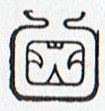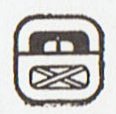|
TRANSLATIONS
The hollow drum, tun, meaning the 360-day year cycle, is visually connected with Pax, the month of separation from the old 'sun'. It means that from the broken 'drum' a new year rises:  ... Now do I see / the Earth anew / Rise all green / from the waves again ... / Then fields unsowed / bear ripened fruit / All ills grow better ... A new virgin Earth evolves from the broken (pax) 'coconut'. After 18 rounds of 20 days the wheel of time has rotated a full tun. In the month of Pax old sun must vanish (pax).
Tzec is number 5 and Pax number 16, i.e. there are 200 days between these months. I have chosen to describe it this way rather than using the ordinal subtraction formula (16 - 5 = 11 and 20 = 11 = 220). A third alternative is to include Tzec and Pax, in which case the number of days when sun is present will be 240 days.
11 months cannot be right, I think. We have to chose between 10 and 12 months for 'summer. An ancient Polynesian would without hesitation say 10 months for the sun and 8 for the moon. Rutua te pahu, the sound of drums, Metoro said, at the beginning of side b of Tahua:
The 'flaring top' sign in Tzec and Pax reminds me about the pito glyph type:
And the Pax glyph has a structure resembling that in Uo, with a horizontal division separating the top (sky) and bottom (earth) parts:
In Pax there is a little circular sign inside a 'mountain' in the 'earth' department, and in Uo sun is still behind bars. The top department has 1 black 'pillar' in Uo, 2 in Pax. Pax is located as number 16 and Uo as number 2, a difference of 14 months. 14 * 20 = 280. 364 - 280 = 84. Pax seems to serve as a 'henua ora' both for sun and moon. Sun is absent, I guess, during 165 days and moon during 84 nights (according to the imagined model). After all these preliminaries I ought to document Pax in the same way as the five earlier months:
|
|||||||||||||||||||||||||||||||||||||||||||||||||||||||||||||||||||||||||||||||||||||||||||||||||||













